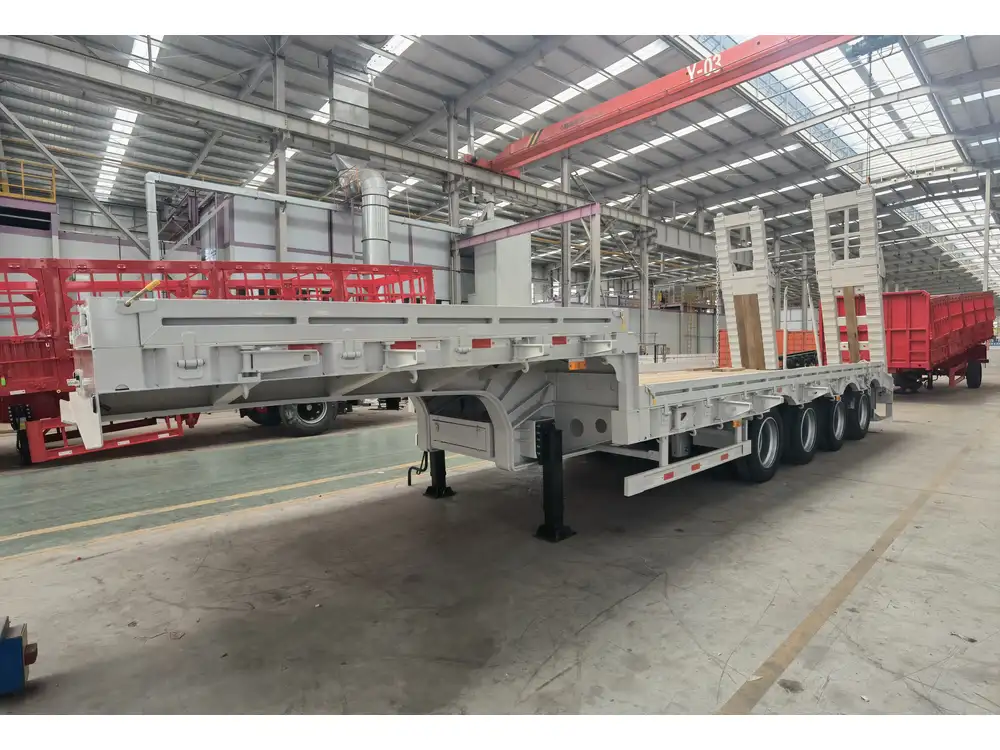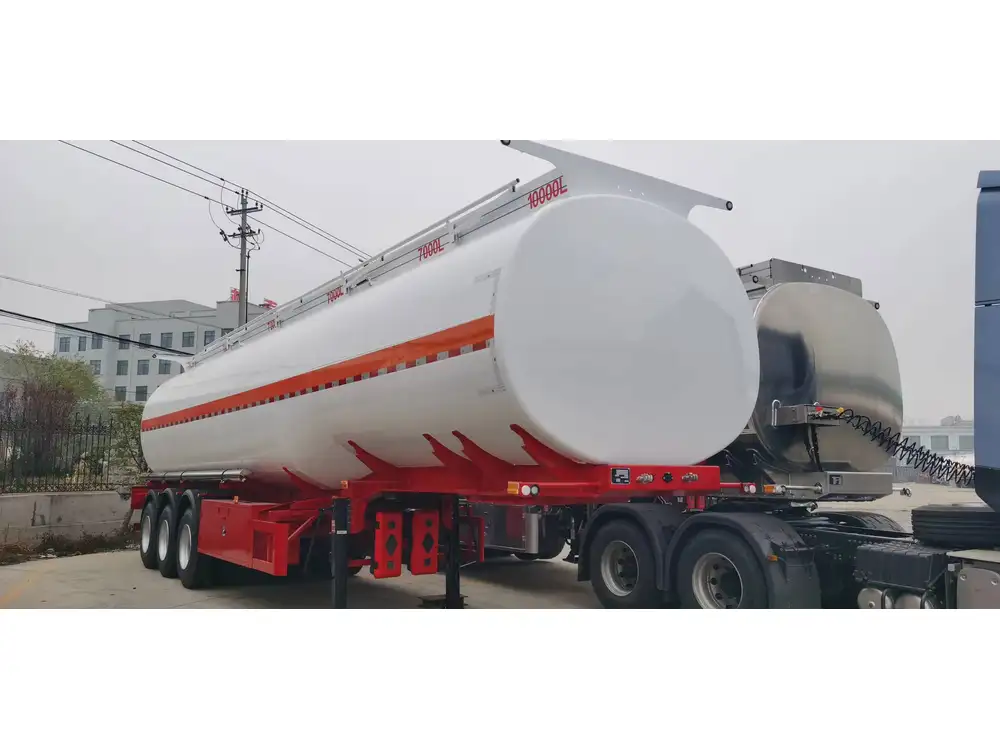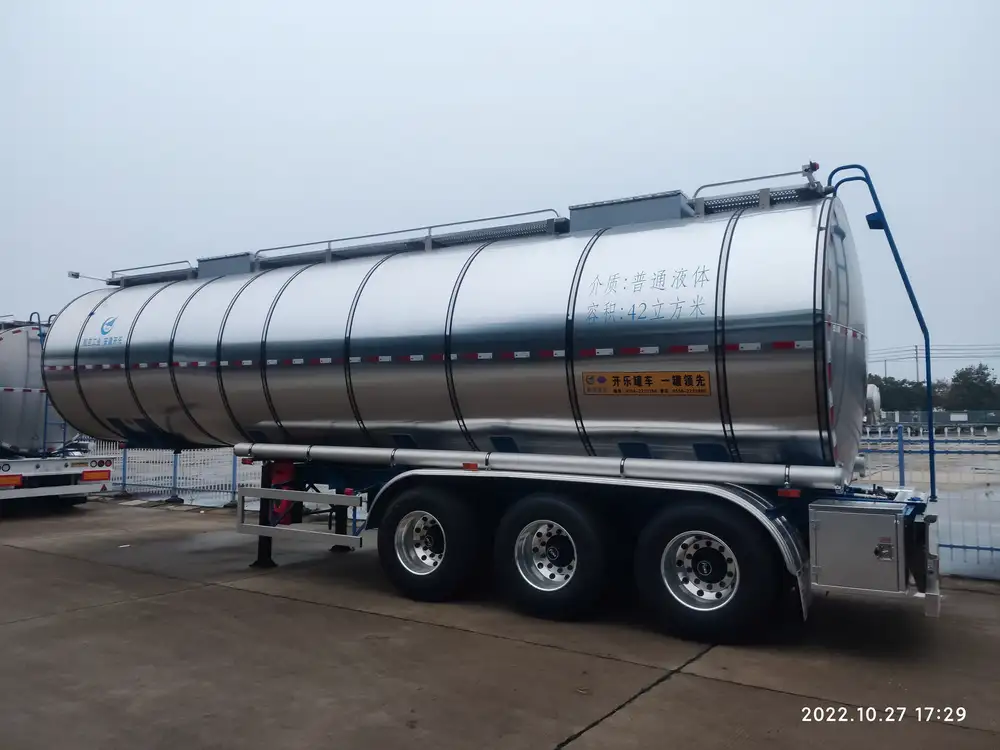Introduction to Semi-Trailer Trucks
Semi-trailer trucks are the backbone of logistics and commerce, acting as essential links in the supply chain. Whether we consider the massive freight they carry or their pivotal role in maintaining the flow of goods across vast distances, understanding the intricacies of how these vehicles are manufactured is crucial. Each semi-trailer truck represents years of engineering innovation, precision manufacturing, and attention to detail. In this article, we will delve into the complete manufacturing process, uncover the challenges faced at each step, and explore how technology integrates into production.
The Essential Components of a Semi-Trailer Truck
To appreciate the manufacturing journey of a semi-trailer truck, one must first comprehend its fundamental components. Understanding these parts reveals not only their function but also their importance in the final product’s performance, safety, and durability.

1. Chassis
The chassis serves as the foundation of the semi-trailer. It is a robust frame that supports all other components. A typical semi-trailer chassis comprises high-tensile strength steel, engineered to withstand heavy loads while ensuring maneuverability. Key features include:
- Cross Members: These provide structural integrity and support the weight of the cargo.
- Kingpin: The connection point for the tractor, allowing easy coupling and uncoupling.
- Suspension System: A crucial system designed to absorb shocks from the road, enhancing both comfort and safety.
2. Axles
Axles are vital for mobility. They connect the wheels to the chassis and distribute the vehicle’s weight. Different types of axle configurations cater to varying cargo requirements:
- Single Axle: Generally used for lighter loads, suitable for city deliveries.
- Tandem Axles: More common, providing better weight distribution and stability, often seen in long-haul trucks.
- Tri-Axle: Adds extra stability for transporting heavier loads.
3. Wheels and Tires
Today’s semi-trailer trucks rely on large, durable tires designed for extensive wear and load-bearing capacity. Quality tires enhance fuel efficiency and provide better grip, especially during adverse weather conditions.

4. Cargo Area
The cargo area (or trailer body) must be tailored to the type of goods transported. A variety of designs exist, including:
- Flatbeds: Best for open loads like construction materials.
- Enclosed Trailers: Ideal for transporting sensitive goods, protecting them from elements.
- Reefer Trailers: Equipped with refrigeration units to transport perishable items.
The Manufacturing Process: A Step-By-Step Examination
1. Design and Engineering
Before any physical components are created, the design phase is critical. Engineers utilize advanced CAD programs to create precise blueprints for the semi-trailer. Here’s what this phase entails:
- Load Calculations: Determining the maximum weight the trailer can handle safely.
- Aerodynamic Studies: Enhancing fuel efficiency by minimizing drag.
- Material Selection: Choosing the right materials for weight, durability, and cost-effectiveness.
Once designs are finalized, prototypes undergo rigorous testing and analysis. This stage ensures that the design is functional and meets safety standards.

2. Material Selection and Preparation
The production of a semi-trailer begins with sourcing high-quality materials. Predominantly, manufacturers opt for:
- High-Tensile Steel: Known for its strength and ability to handle heavy loads.
- Aluminum: Increasingly popular for its lightweight properties, aiding fuel savings.
- Fiberglass and Composite Materials: Used in specific applications to improve insulation and reduce weight.
After selection, materials are prepared for manufacturing—cutting, shaping, and treating them to enhance durability.
3. Chassis and Frame Assembly
Creating the chassis is one of the most critical steps. Welders meticulously assemble the components, ensuring precision and adherence to safety standards. Steps in assembly include:
- Welding: Using advanced welding techniques to join steel pieces.
- Quality Control: Ensuring that dimensions and joining integrity meet specifications.
- Rust Prevention: Applying protective coatings to prolong the life of the chassis.
4. Axle Installation
Once the chassis is complete, axles are fitted. This process involves aligning and securing them to ensure maximum load distribution and stability. Depending on the design, adjustments may be made to optimize the suspension system.

5. Body Construction
Depending on the type of trailer, the next phase varies.
- Flatbeds: Constructed using beams and decking materials.
- Enclosed Trailers: Developed using sidewalls and roofing materials, insulated as required.
- Reefer Trailers: Insulated walls with a built-in refrigeration unit are essential for temperature-sensitive cargo.
6. Wiring and Electronics Setup
As technology advances, many semi-trailer trucks incorporate electronics for better performance and safety. Key installations include:
- Lighting Systems: Ensuring compliance with road safety regulations.
- Sensors: Monitoring cargo temperature and vehicle systems.
- Telemetry Solutions: Providing real-time data on vehicle location, load metrics, and efficiency.
7. Painting and Finishing
The finishing touches are paramount for durability and aesthetics. The painting process usually involves:
- Surface Prepping: Cleaning and priming surfaces.
- Automated Spray Painting: Ensuring a uniform coat that resists corrosion.
- Final Inspection: Assessing the final product for paint defects or physical blemishes.

8. Quality Assurance Testing
Before leaving the manufacturing facility, each semi-trailer undergoes rigorous testing. This includes:
- Road Testing: Checking the handling, braking, and overall performance.
- Stress Testing: Ensuring components withstand the truck’s operational demands.
9. Delivery and After-Sales Support
Finally, once a trailer passes all tests, it is ready for delivery. Manufacturers often establish after-sales support for maintenance and troubleshooting, which is crucial for long-term relationships.
The Importance of Technological Integration in Manufacturing
In contemporary manufacturing, adopting advanced technologies enhances the production process and ensures efficiency. Here are some notable advancements:

Robotics in Manufacturing
Automation through robotics streamlines repetitive tasks like welding and assembling, reducing production time and improving precision.
3D Printing
This technology is revolutionizing prototype development. Rapid prototyping allows engineers to assess designs before full production, significantly cutting time and cost.
IoT and Real-Time Data Monitoring
Integrating IoT devices allows for monitoring vehicle performance and condition in real-time, assisting manufacturers and drivers with predictive maintenance.

Addressing Common Challenges in Semi-Trailer Truck Manufacturing
Despite the advances in technology and engineering, manufacturers face several challenges:
1. Supply Chain Disruptions
Fluctuations in material availability can delay production schedules. Establishing reliable partnerships with suppliers and diversifying the supply base are crucial in mitigating these disruptions.
2. Regulatory Compliance
Manufacturers must continually adapt to changing regulations concerning safety, emissions, and environmental standards. Staying ahead of these changes is essential for compliance and maintaining market competitiveness.

3. Skilled Labor Shortage
A diminishing workforce skilled in manufacturing techniques poses significant challenges. Investing in training programs and modern tools can boost workforce capabilities.
Exploring the Future of Semi-Trailer Truck Manufacturing
As we look ahead, the semi-trailer truck manufacturing landscape is poised for even more changes. Here are areas to monitor:
Electric Semi-Trailers
The increasing focus on sustainability and reducing emissions is promoting the development of electric semi-trailer trucks. Manufacturers are exploring battery technologies and charging infrastructures.

Autonomous Technology
Self-driving trucks could redefine logistics, presenting opportunities for improved efficiency and reduced labor costs. Integrating autonomous systems will bring about regulatory and safety challenges that need to be addressed.
Sustainable Practices
As environmental concerns rise, manufacturers are adopting sustainable practices in materials sourcing, production methods, and lifecycle management, fostering a greener industry.
Conclusion
The manufacturing of semi-trailer trucks is a multifaceted process that combines innovation, precision engineering, and strategic planning. By understanding the intricacies of production—from design and material selection to assembly and testing—we can better appreciate how these vital vehicles contribute to our economy. The future promises further advancements, particularly in tech-driven innovations and sustainability efforts, ensuring that semi-trailer trucks continue to fulfill their critical role in global logistics.
As we embark on this journey through the world of semi-trailer manufacturing, one thing remains clear: the evolution of these trucks reflects not only our advancements in technology and engineering but also our commitment to creating efficient, safe, and sustainable transport solutions for years to come.



